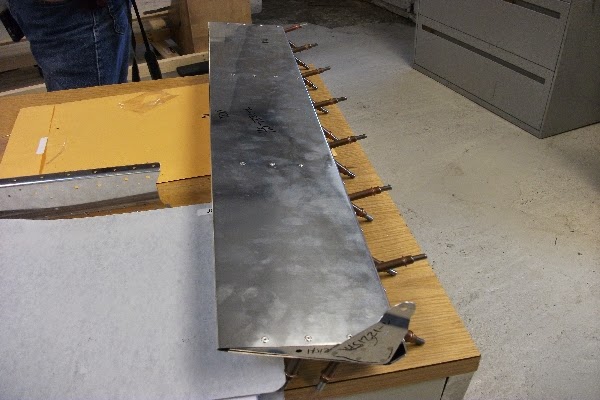Earlier in today's session, the
students were given a mini lesson on aerodynamics and the purposes of
the stabilizing surfaces of the airplane, i.e. the antiservo tabs,
stabilator, rudder. Then work commenced on the various sections. The
stabilator was finally completed, with the anti-servo tabs and
counterbalance weight attached. The assembly was set aside for future
use and work quickly began on the vertical stabilizer, prepping the
skins and ribs.
As for the canopy, fiberglass work was
the next step. Some students started tracing and cutting out
fiberglass pieces in preparation for the layering.
A couple students reverted back to
landing gear components and learned the process of wheel balancing
using an awesome homemade mechanism by Mr. S.Vangrunsven. Others
helped with attaching the cooling shroud to the cylinders.
The hangar was especially packed today
with some unfamiliar faces. Today was the official TeenFlight 3 Open
House, so family, friends, and curious individuals filled the room
observing the students as they worked. Guests were able to see all
the various projects currently in progress, and were treated to a
slide-show presented by previous TF students on their experiences
flying the TF2 plane. The TF1 plane also made a special appearance,
so visitors and guests were able to see the 'final product'. Everyone
enjoyed themselves and were all equally impressed with the work and
diligence shared among the students and mentors.
Thank you to those of you who
generously gave a donation to the Airway Science for Kids Program,
your support helps promote aviation among younger generations and
allows amazing opportunities, like TeenFlight, to exist and continue.
You help provide and sustain the ASK programs and we, the mentors and
students of TF3, greatly appreciate it!
In addition, we would like to thank
everyone who took the time to visit us in the hangar. It was
wonderful to see such interest, and we all enjoyed your company!










































